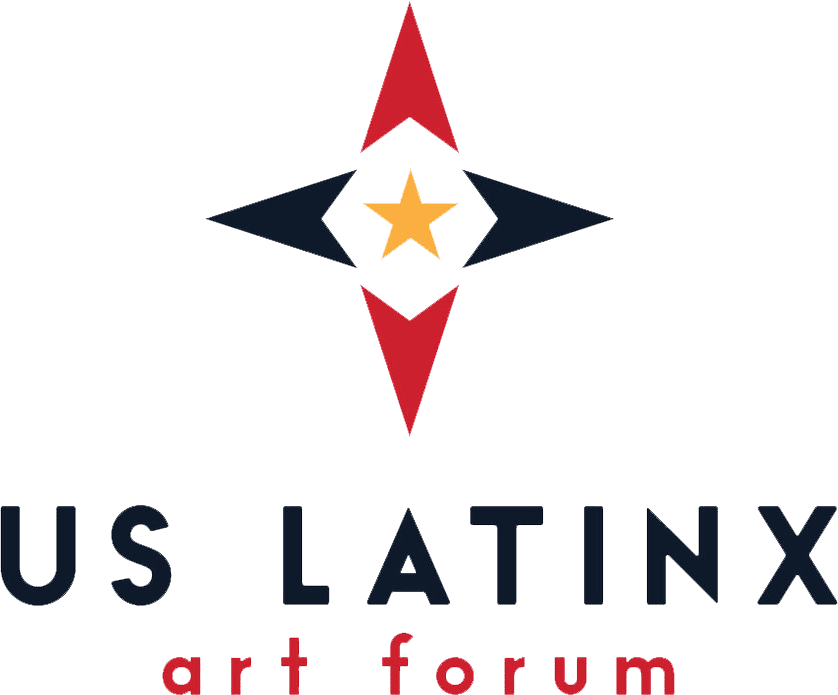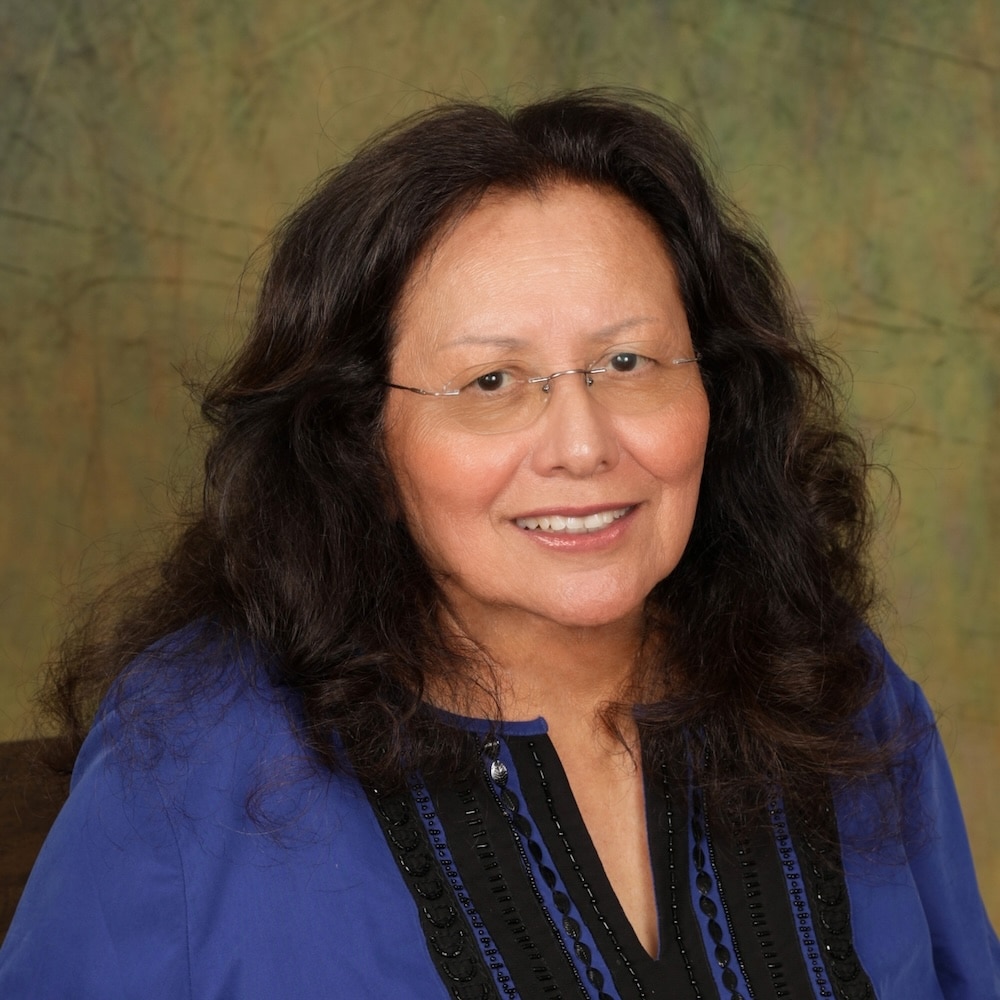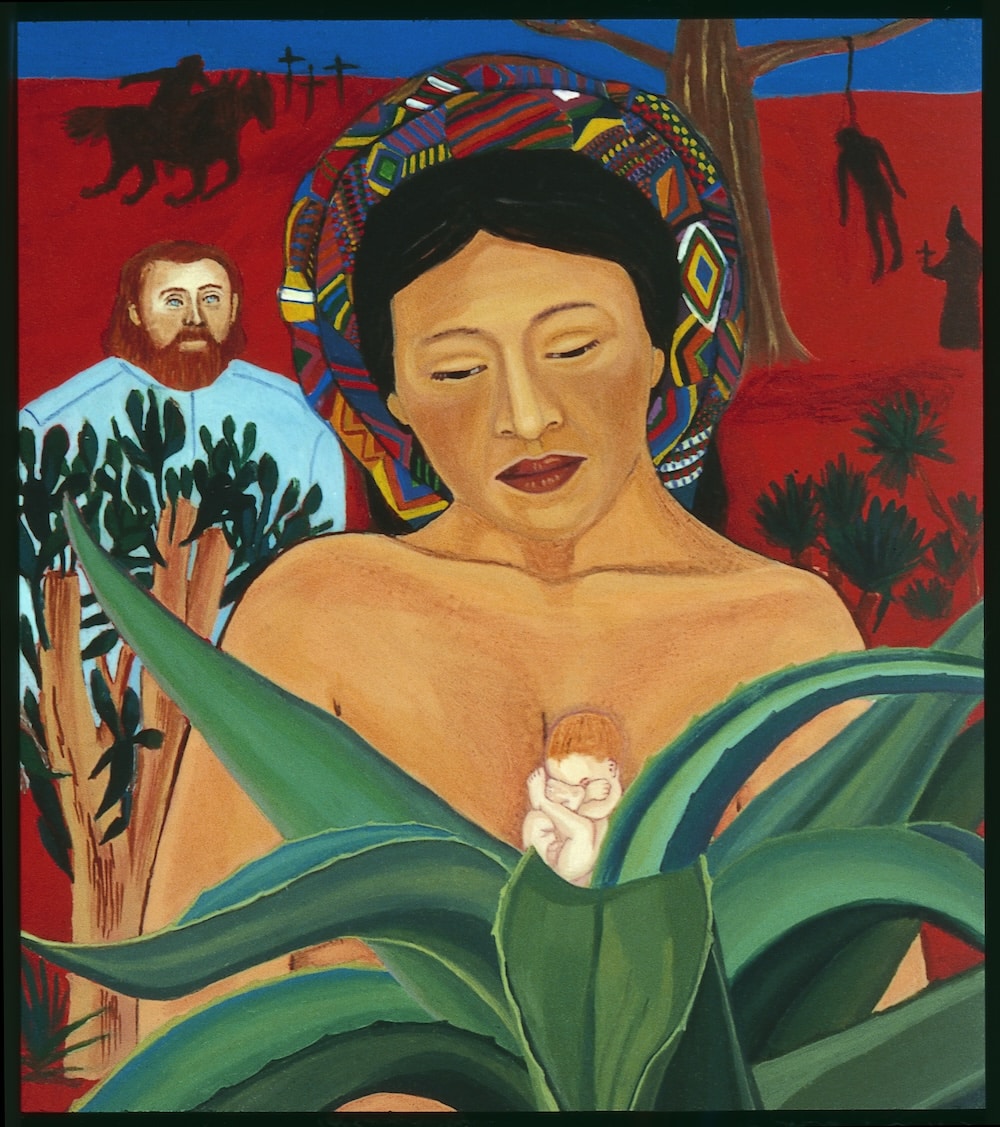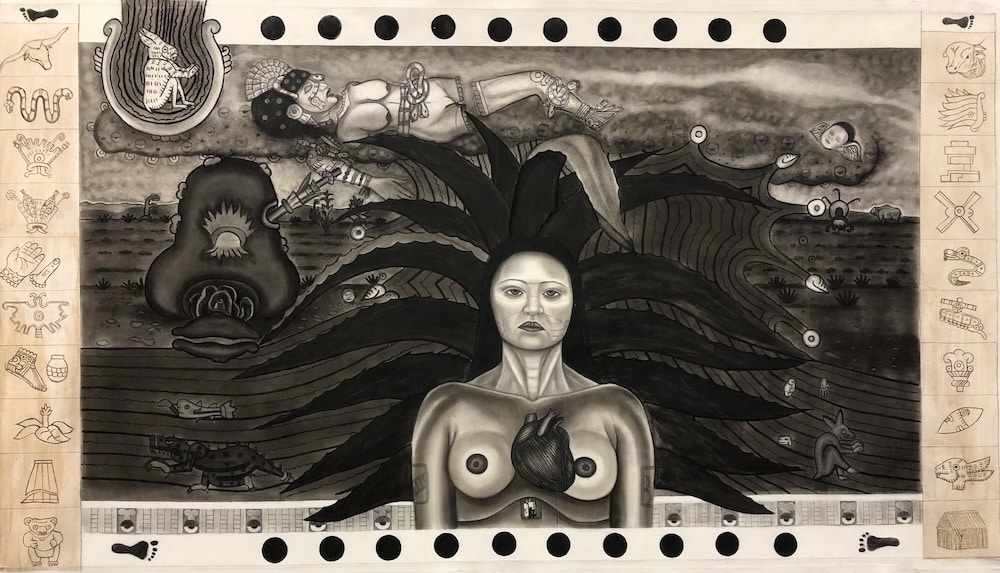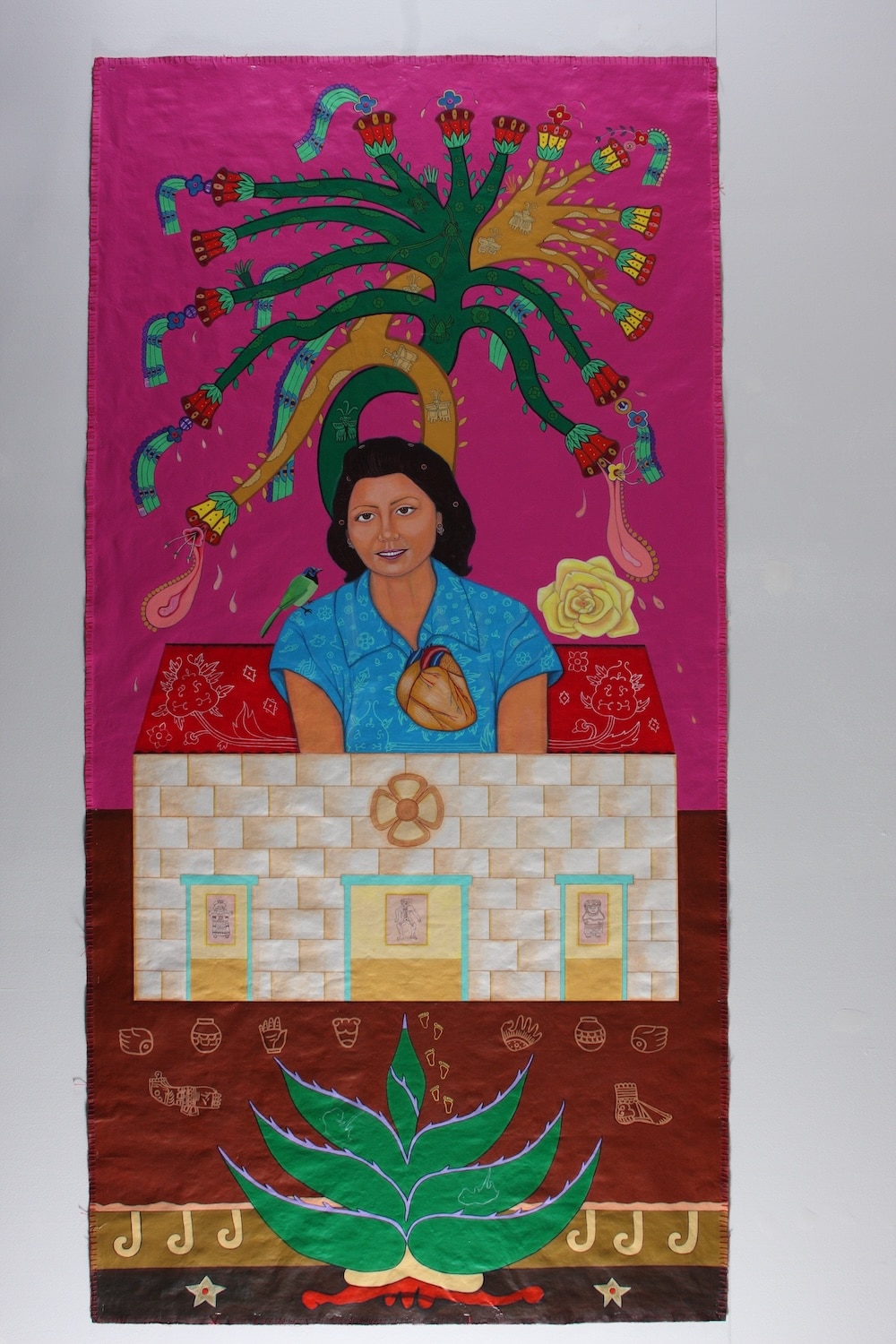
Latinx Artist Fellowship
Santa C. Barraza
Painter, Muralist
Kingsville, Texas
Art has nurtured me and allowed me to return to the land of my ancestors, my sense of home, comfort, and harmony… [it] has been an artistic journey of tapping into pre-conquest symbols, personal memories, history, and traditional sacred art forms. It has provided me with solace and meaning in seeking my true face and yollotl, a Nahuatl word for ‘heart or soul.’
Born in 1951 in Kingsville, Texas, Santa Contreras Barraza is a contemporary Chicana/Tejana artist and founder of Barraza Fine Art LLC, a gallery and studio situated in her hometown. She received her Bachelor of Fine Arts in 1975 and her Master of Fine Arts in 1982 from the University of Texas at Austin. With thirty-four years of teaching experience in higher education, Santa Barraza retired from Texas A&M University-Kingsville in 2020. She formerly taught at the School of the Art Institute of Chicago, Penn State University at University Park, and La Roche College in Pittsburgh, Pennsylvania, and study abroad programs in Austria, Spain, and Mexico.
Her vita reflects a career replete with awards, appearances and lectures, exhibitions, and publications. Her artwork has been widely exhibited in the United States, Mexico, Italy, Spain, Germany, Austria, Argentina, and France, and is in numerous permanent and private collections. Most recently, Barraza was invited to exhibit at the Frida: the Making of an Icon exhibition to open in 2026 at the Museum of Fine Arts in Houston. In 2022 and 2023, Barraza exhibited in Traitor, Survivor, Icon: the Legacy of La Malinche at the Denver Art Museum, Albuquerque Art Museum, and the San Antonio Art Museum. She also exhibited in Chicana/o Art Movimiento y Más en Austin, Tejas, 1960s – 1980s in 2022, Mexic-Arte Museum, Austin, Texas. Her artwork was featured in Art in Embassies, Exhibition, US Department of State, US Ambassador Ken Salazar, from 2022 through 2025 in Mexico City.
In 2001, Texas A&M University Press published the book, Santa Barraza: Artist of the Borderlands, which received the annual Southwest Book Award from the Border Regional Library Association in 2002. In 2025, her artwork was featured on the book cover of the Somos Tejanas: Chicana Identity and Culture in Texas published by the University of Texas Press.
In 2008, she was awarded the Heroes for Children’s Award by the State of Texas Board of Education. Among the numerous awards received by Barraza are the Reader’s Digest-Lila Wallace Grant in 1993, Professional Achievement Award from the Women of Color Association in 2008, Sueños Cultura y Vida Recipient by LULAC Corpus Christi in 2012, Lifetime Achievement Award by Mexic-Arte Museum of Austin in 2014, and the Tejano Heritage Award in 2020.
